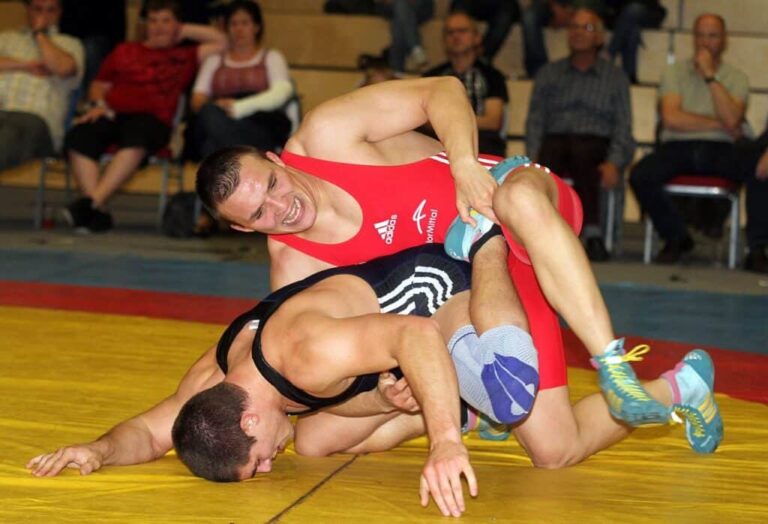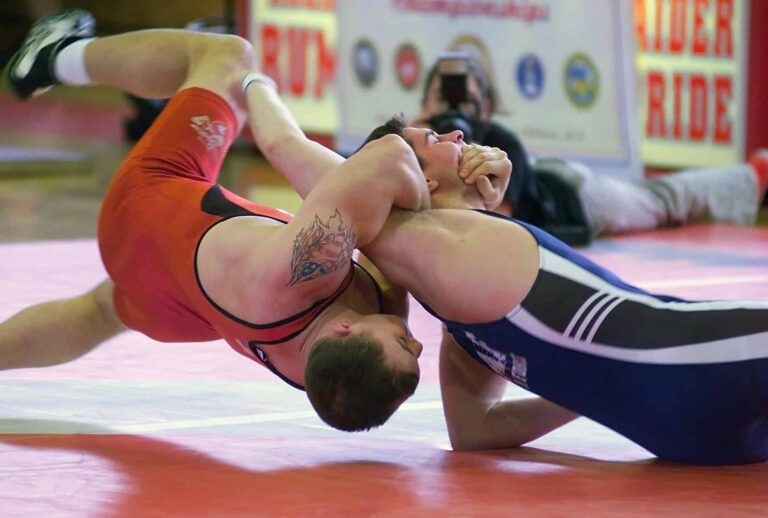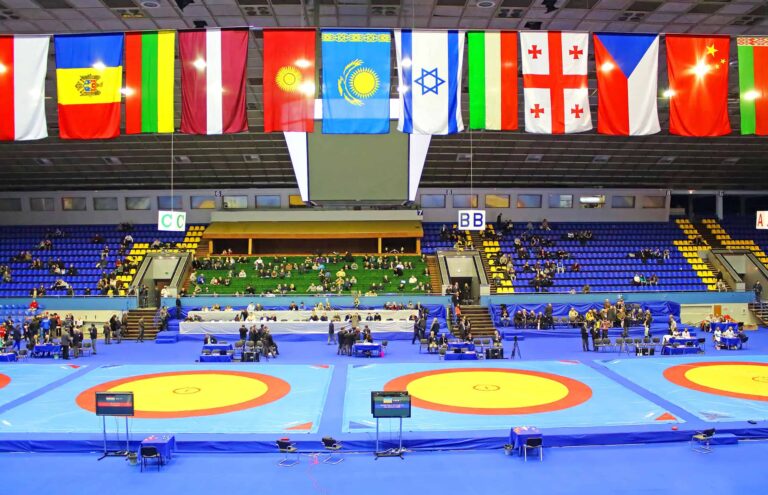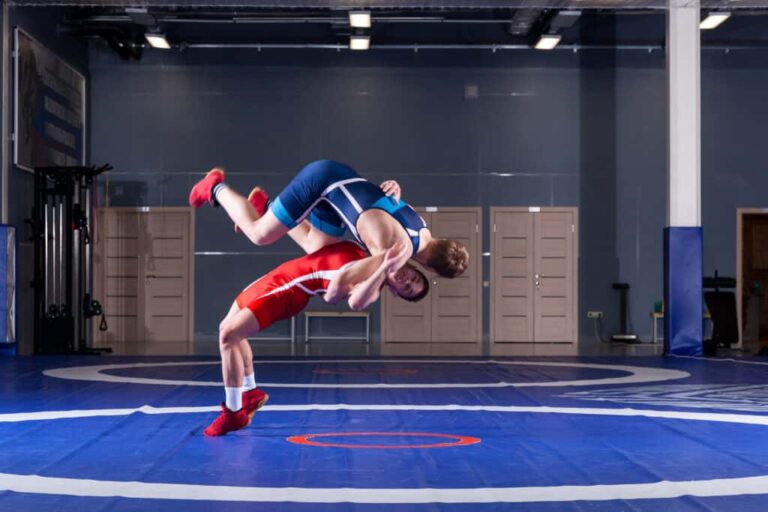Greco-Roman Wrestling Weight Classes In KG and LBS
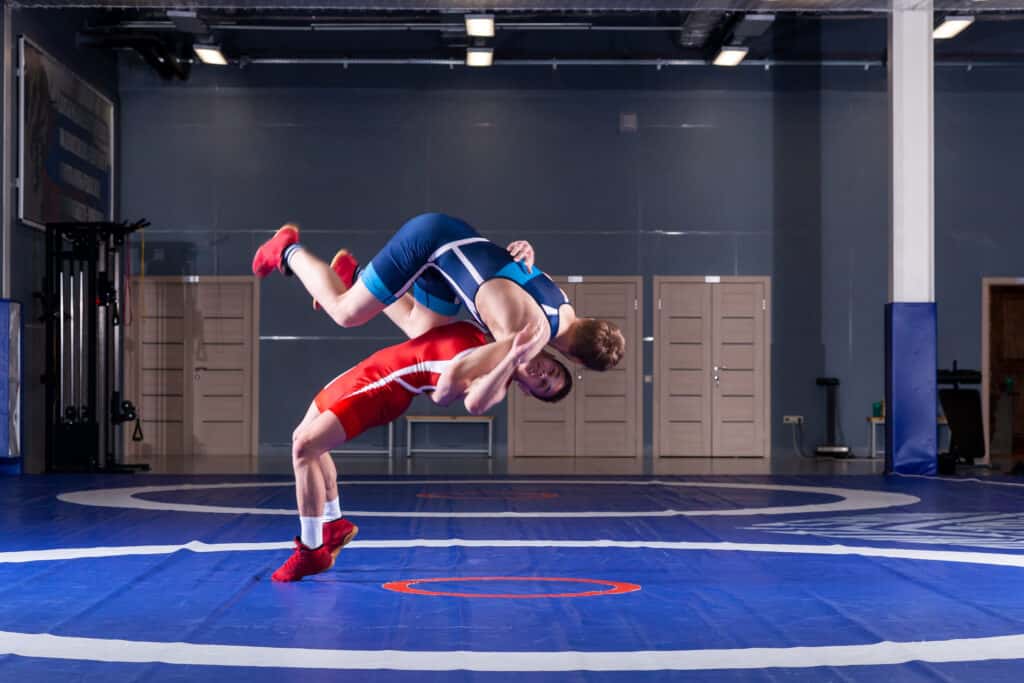
When it comes to wrestling, there are many styles and variations of rules and regulations within those styles. Weight classes are also very important within Greco-Roman wrestling. Knowing these rules can be the difference between success and failure and between competing and being disqualified.
Greco-Roman wrestling weight classes are as follows:
- U15 Wrestlers (84-187 lbs)
- Cadets (99-243 lbs)
- Juniors (126-276 lbs)
- Seniors & Veterans (130-287 lbs)
- Olympic Weights (132-287 lbs)
Each wrestling style has its own idiosyncratic weight classifications, and Greco-Roman wrestling is no different.
This article will show you what the weight classes are, how to place yourself in a weight class, and why weight classes differ across disciplines. Let’s get started.
Qualifying Age Ranges For Greco-Roman Wrestling Weight Classes
Weight classes exist within age ranges, and neither weight classes nor age groups are uniform across wrestling disciplines. If you are involved in freestyle wrestling or a scholastic incarnation of the sport, these will not be accurate, as what follows is specific to Greco-Roman wrestling.
Greco-Roman Wrestling Age Brackets
- U15 wrestlers – aged 14-15 years (this class is sometimes called “schoolboys”)
- Cadets – 16-17 years old
- Juniors – range from 18 to 20 years old
- Seniors – older than 20 years old
- Veterans – older than 35 years
Greco-Roman Wrestling Weight Classes
Within each age range, there is a maximum weight a competitor can be in order to participate in that class. This ceiling can be a source of stress for wrestlers who want to give themselves every advantage by weighing in at the highest weight possible in their class. By doing so, they risk going over.
This means going from being the biggest guy in your class to the smallest, and can easily presage a defeat.
Known as “cutting weight,” wrestlers can often be found days and hours before a match trying to drop a kilogram or two using a variety of ways to drop water weight. Weeks and days before a match, wrestlers might use also use diet and exercise to help them get into the best Greco Roman wrestling weight class.
These are American weight class numbers. Other nations have their own weight classes that do not always line up.
U15 Wrestlers Weight Classes
- 38 kg (84 lbs), some scholastic organizations specify 34 kg (75 lbs) as a minimum weight
- 41 kg (90 lbs)
- 44 kg (97 lbs)
- 48 kg (106 lbs)
- 52 kg (115 lbs)
- 57 kg (126 lbs)
- 62 kg (137 lbs)
- 68 kg (150 lbs)
- 75 kg (165 lbs)
- 85 kg (187 lbs)
Cadets Weight Classes
- 45 kg (99 lbs), with a minimum of 41 kg (90 lbs)
- 48 kg (106 lbs)
- 51 kg (112 lbs)
- 55 kg (121 lbs)
- 60 kg (132 lbs)
- 65 kg (143 lbs)
- 71 kg (157 lbs)
- 80 kg (176 lbs)
- 92 kg (203 lbs)
- 110 kg (243 lbs)
Junior Weight Classes
- 57 kg (126 lbs)
- 61 kg (134 lbs)
- 65 kg (143 lbs)
- 70 kg (154 lbs)
- 74 kg (163 lbs)
- 79 kg (174 lbs)
- 86 kg (190 lbs)
- 92 kg (203 lbs)
- 97 kg (214 lbs)
- 125 kg (276 lbs)
Senior and Veteran Weight Classes
- 59 kg (130 lbs)
- 66 kg (146 lbs)
- 75 kg (165 lbs)
- 85 kg (187 lbs)
- 98 kg (216 lbs)
- 130 kg (287 lbs)
Greco-Roman Wrestling Weight Classes At The Olympics
These numbers are specific to Olympic competition and will not be used at state or local events or in any scholastic Greco-Roman wrestling program:
- 60 kg (132 lbs)
- 67 kg (148 lbs)
- 77 kg (170 lbs)
- 82 kg (181 lbs)
- 87 kg (192 lbs)
- 97 kg (214 lbs)
- 130 kg (287 lbs)
Why Different Weight Classes Exist In Greco Roman Wrestling
Anyone who ever saw Mike Tyson fight can see that no matter how good Manny Pacquiao, the Filipino featherweight boxer, is, he’d be hopelessly outclassed against the vastly larger Tyson, which is why we don’t see fights like this.
Boxers, MMA fighters, karate practitioners, and wrestlers are classified by weight to allow for even matching. Ideally, the only difference between opponents would be skill level. Of course, many wrestlers do try and hack the system by doing drastic weight cuts before a contest. Because of this, both wrestlers might not actually be of equal size.
In an attempt to overcome variables like growth rate and genetic predispositions to earlier or later onset of puberty in individuals, wrestling governing bodies broke teenage wrestlers into three age ranges and installed weight range windows in each age group.
Women’s Greco-Roman Wrestling Weight Classes
You might be wondering why I have not included women’s Greco-Roman wrestling weight classes. Well, the simple answer is that there is no women’s division in Greco-Roman wrestling at this time.
So naturally, there are no women greco roman wrestling weight categories or divisions. Perhaps one day there will be but not at this time.
The only Olympic-style of wrestling that has a women’s category at this time is women’s Freestyle wrestling.
What Greco-Roman Wrestling Weight Class Is Right For You?
Choosing the correct Greco Roman wrestling weight class is not a simple choice. Instead of me answering that myself I would suggest that you ask your coach. That said, there are some things that you should take into consideration.
Though I am not personally suggesting it, it must be stated that many wrestlers choose to cut weight for competitions. Whether or not you choose to do so will make a big difference on which Greco-Roman weight class you will fall into.
Though I am not a big fan of drastic weight cuts, I do think it is always a good idea to stay lean and strong. Size and strength will give you a huge advantage over your opponent. Because of this, I would suggest trimming off as much unnecessary fat as you can through healthy dieting and exercise.
I’m not saying you need to look like a ripped bodybuilder but you don’t want to be wrestling someone your weight who is holding on to drastically more muscle mass than you are. My advice is to do your proper strength training and try to get as big and strong as your genetics will allow but stay as lean as you can in the process.
Whatever weight class you naturally fall into by doing this is probably the best weight class for you. Your weight class might change as you go through the process, especially for younger wrestlers.
Conclusion
Greco-Roman wrestling has its peculiarities, including its weight classification system. Wrestlers generally have an idea of their weight class while they practice.
When they weigh in on the day of the match, they may find themselves too heavy or too light for their intended class. As this sudden reclassification can spell disaster, wrestlers are intimately familiar with weight classes and monitor their own weight very closely.
It’s important to a wrestler’s career to keep tabs on this because it is important to the wrestler’s health to maintain a constant weight. Wild fluctuations in body weight for any reason are unhealthy.

